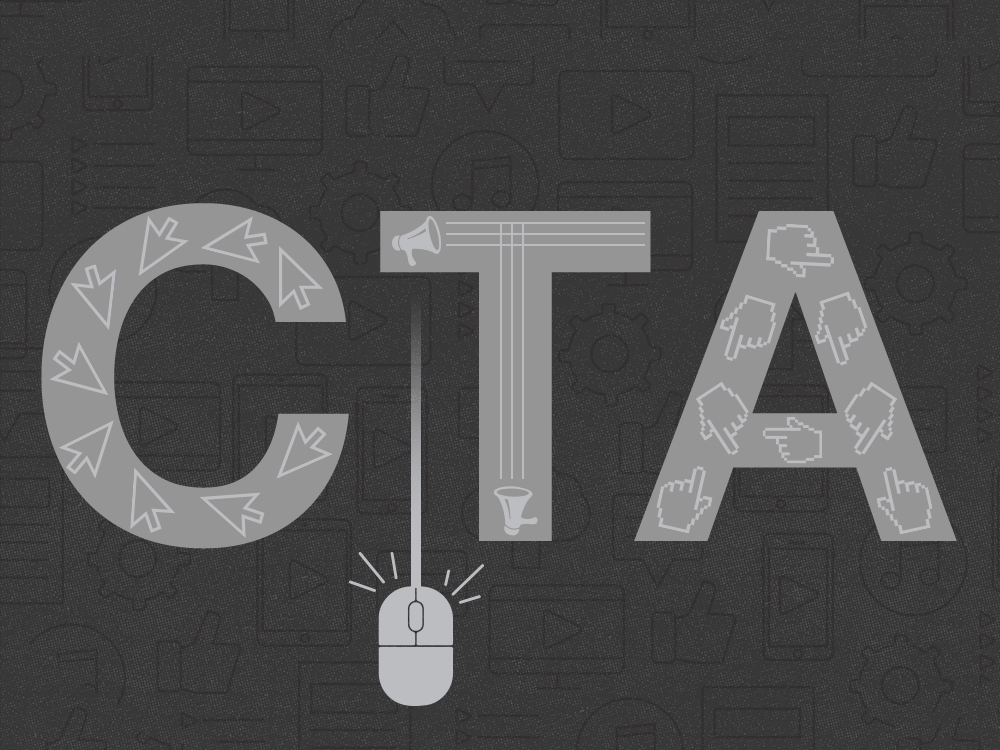CTA is marketing speak for “call to action,” a short line or phrase–sometimes only a word or two—that aims to trigger a specific reaction from the reader/viewer/listener.
The actions to suggest are endless, but the most common digital CTAs are click, shop and buy. In some ways, the CTA is a mini sales pitch. It makes the case for the product or service and implores the reader to act on it.
So how can you make the case that makes the sale? Here are four ways to get the most out of your CTAs:
Enliven your copy with verbs.
Writers love verbs because they can pack a lot of punch in just a few characters.
Verbs are essential in CTAs because they describe the action you want the reader to take. Consider the difference between pushing a door open and kicking a door open. Anyone could push a door open, and it wouldn’t be out of the ordinary–nor does it ignite an emotion. But when you think of kicking a door open, you may imagine someone being in a hurry. Or you picture a firefighter trying to reach a child in trouble. With kick you’ve described both the action (opening a door) and the feeling associated with it (urgency).
There are some verbs to avoid. Some common “push” verbs in social media copywriting are “use” and “try.” These lackluster verbs may be accurate, but they don’t illustrate how the reader will feel when they heed your call to action.
Consider switching “try” with a verb that evokes the feeling the target should associate with your product. Some examples include: enjoy, taste, bask, dare, discover. When you focus on the feeling of using the product, and the feeling is positive, you then have yourself a more persuasive call to action.
Cut the fluff.
The best CTAs are short and snappy.
You needn’t dawdle over writing elegant prose and referencing pop culture. Writing wit worthy of a Gilmore Girl is a noble goal, but you risk losing the target’s attention with a CTA that’s trying too hard.
Instead, anchor your CTA with a solid verb and stick to what’s essential: how the reader benefits. Why should the target heed your call to action? What can they gain when reading your piece and buying your product? What can they learn by reading your content? Cut anything that doesn’t speak to these questions; it’s all fluff.
Empathize, and empathize well.
Your CTA should show your target that you get it.
It’s key to be realistic about the reader’s life and how your product fits into it. By replacing blanket claims like “essential” and “quality” with practical descriptions that express exactly how your product will make the target’s life better, you’re more likely to see them heed your CTA.
Below is an example call to action written three ways.
Good: The cheap-o hose is just that: cheap. Get growing with a quality hose that won’t let you down.
Better: The cheap-o hose is just that: cheap. Make your garden work easier with a hose that’s built to last.
Best: The cheap-o hose is just that: cheap. Skip hose headaches with a hose crafted to endure lugging and tugging.
Notice the call to action is essentially the same in all three: buy our hose instead of the cheap-o one. But the third CTA is much more descriptive with only a few extra words.
- You’ve identified the problem: cheap hoses cause headaches because they don’t work well.
- You’ve positioned your product as a solution to the problem: your hose is designed to work better.
- And lastly, you’ve put the hose in a context that is true to the user’s experience: dragging it around the yard.
The third CTA connects emotionally by tapping into the frustration people feel when their cheap hoses get kinked or punctured. They either need to fix the broken hose or buy a new one, both of which require some combination of energy, time and money. All of a sudden a hose is more than just a hose: it’s efficiency.
Play to your platform’s strengths.
It’s common to repackage content for multiple social channels, but not all platforms are created equal.
Facebook is a great platform if you want to drive traffic because clicking links is easy and intuitive. Users can effortlessly click links and stay within the app or venture out of the platform whenever they choose. Instagram isn’t as friendly.
Instagram is a mobile-first social tool, and users tend to stay in the app rather than clicking through to external sites. Linking is also limited to the link in your bio rather than in your post copy, meaning your CTA has to work harder and will likely focuses on a broader behavior like “shopping for products that suit the season” instead of “buy this product.”
While you encourage fans on Facebook to visit your blog, you may invite fans on Instagram to post photos using a brand hashtag. Both these CTAs play to their platform’s inherent strengths, and that’s what makes them winners.
Always give your CTA a gut-check
Before you publish your CTA, test it with someone nearby. Confirm that it has a unique and powerful verb. Make sure you can say it with a single breath. Most importantly, does it evoke emotion? If so, it’s time to put it to use and watch action happen.
Crafting an emotional CTA is one of many ways we drive sales and inspire devotion for brands. Ted can share all the others. Find him at tjun@hiebing.com.
